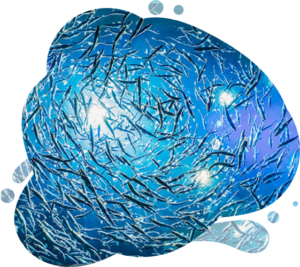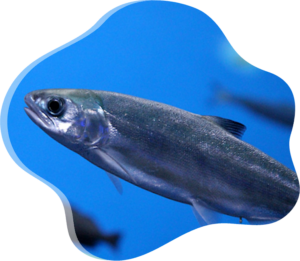Aquaculture is a vital sector of global food production, contributing to the availability of seafood. One of the main challenges facing aquaculture farmers is ensuring that their fish receive the proper nutrients to thrive. Fishmeal has emerged as a crucial ingredient in aquaculture feed, providing the necessary building blocks for fish growth, health, and reproduction. In this guide, we will explore what fishmeal is, its importance in aquaculture, and how to choose the best fishmeal for your operation.
Happy, Healthy Fish: The Role of Fishmeal in Aquaculture
In any aquaculture operation, providing fish with the proper nutrients is essential to maintaining a healthy, productive farm. Fishmeal plays a critical role in achieving this, as it is a nutrient-dense feed ingredient that supports the specific dietary needs of fish, especially fast-growing species like salmon and trout.
High Protein Content for Rapid Growth
Fishmeal is renowned for its high protein content, often exceeding 60%. This protein is essential for muscle development and growth. The rich protein profile found in fishmeal is critical for species like salmon, which can grow 20-30% faster when fed fishmeal compared to other feed ingredients. Fast growth translates into higher yields and reduced time to market, which benefits farm profitability.
Rich Nutrient Profile
In addition to protein, fishmeal is packed with important amino acids, omega-3 fatty acids, and vitamins. These nutrients are vital for supporting fish health, immune function, and reproductive success. Studies show that fishmeal can improve survival rates by up to 15% and increase overall fish growth efficiency by 20% when compared to plant-based feed alternatives. The nutrient density of fishmeal ensures that fish receive everything they need to grow strong and healthy.
Fish Grow Faster, Stronger: The Benefits of Fishmeal
Fishmeal is not just another ingredient—it’s the cornerstone of successful aquaculture feed. By incorporating fishmeal into your feed formula, you can experience significant benefits in terms of growth rates, feed efficiency, and environmental impact.
Improved Feed Conversion Ratios (FCR)
Feed conversion ratio (FCR) is a key performance indicator for any aquaculture operation. It measures how effectively fish convert feed into body mass. Fishmeal helps improve FCR by ensuring that fish can efficiently process and absorb the nutrients they need. This leads to faster growth and reduced feed waste, ultimately lowering operational costs and improving profitability.
Optimized Farm Profitability
When fish grow faster and healthier, farm profitability increases. High-quality fishmeal enables you to meet market demand more quickly, increasing production cycles and yields. With optimized growth rates and reduced feed waste, fishmeal allows farmers to operate more efficiently, ultimately boosting their bottom line.
Reduced Environmental Impact
Sustainability is becoming an increasingly important aspect of aquaculture. Fishmeal’s ability to accelerate growth while minimizing feed waste helps make aquaculture operations more sustainable. By reducing excess feed and ensuring that more of the nutrients are absorbed by the fish, fishmeal lowers the environmental impact of aquaculture farms, contributing to more eco-friendly operations.
Common Issues with Subpar Fishmeal
While fishmeal can provide significant benefits, the quality of the product matters greatly. Using low-quality or subpar fishmeal can result in poor growth, health problems, and higher operational costs.
Poor Fish Growth and Inefficient Feed Conversion
Subpar fishmeal often suffers from insufficient protein content or poor digestibility, both of which can lead to:
- Stunted fish growth.
- Increased feed waste, driving up operational costs.
- Environmental issues, such as water pollution from uneaten feed.
Inefficient feed conversion can slow down production and increase the time required to bring fish to market. This can ultimately affect farm profitability and efficiency.
Health Problems and Increased Mortality Rates
Another issue with low-quality fishmeal is the potential for contamination or oxidation. When fishmeal is not properly processed or stored, it can develop rancidity, compromising its nutritional value. This can cause:
- Poor immune responses, making fish more susceptible to diseases.
- Higher mortality rates, leading to financial losses and disrupted farm operations.
Maintaining high-quality fishmeal is essential for minimizing health risks and ensuring the long-term success of your farm.
Supply Chain Uncertainty
A significant challenge with subpar fishmeal is supply chain uncertainty. Inconsistent or unreliable suppliers can deliver varying levels of quality, which can disrupt fish growth cycles. Additionally, ethical and sustainability concerns can arise if fishmeal is sourced irresponsibly. Ensuring traceability and transparency in your supply chain is vital for maintaining a reliable feed supply.
How to Identify High-Quality Fishmeal
Identifying high-quality fishmeal is essential for ensuring the best growth, health, and profitability for your fish. There are several factors to consider when choosing the right fishmeal for your operation.
Focus on Nutritional Content
The first step in identifying high-quality fishmeal is to assess its nutritional content. Ensure that the fishmeal you choose contains at least 60% protein, which is crucial for rapid growth. Additionally, check for a balanced amino acid profile that includes essential amino acids like lysine and methionine. These are particularly important for species like salmon that require specific amino acids for fast growth.
Pro Tip: Request a Certificate of Analysis (COA) from your supplier to confirm the nutritional claims made about the fishmeal.
Evaluate Freshness and Oxidation
Freshness is a critical factor in maintaining the nutritional quality of fishmeal. Fresh fishmeal should be light brown in color and have a pleasant, mild fishy smell. If fishmeal has a strong, rancid odor or appears dark in color, it may have undergone oxidation, which can degrade its nutrient content.
Pro Tip: Store fishmeal in a cool, dry environment to preserve its freshness and nutritional quality.
Understand Processing Methods
The method used to process fishmeal can significantly affect its quality. Two common methods are steam-drying and flame-drying. Steam-dried fishmeal retains more nutrients and is less prone to oxidation than flame-dried varieties.
Pro Tip: Always ask suppliers about their processing methods to ensure that the fishmeal you purchase is of consistent, high quality.
Certifications and Traceability: Building Trust and Confidence
To ensure that you are purchasing high-quality and sustainably sourced fishmeal, it’s important to look for certifications and traceability in your supply chain.
Recognize Trusted Certifications
Look for certifications such as the Marine Stewardship Council (MSC) or International Fish Oil and Fishmeal Organisation Responsible Supply (IFFO RS), which indicate that the fishmeal has been sourced responsibly and meets high-quality standards. These certifications provide peace of mind that your feed is sustainably produced and ethically sourced.
Demand Traceability
Traceability is essential for verifying the quality and sustainability of fishmeal. Work with suppliers who can provide full documentation of their sourcing practices. Transparency in the supply chain ensures that the fishmeal you purchase comes from ethical, sustainable sources and meets your quality standards.
Opt for Sustainable Choices
Sustainability is more important than ever in the aquaculture industry. Consider sourcing fishmeal derived from byproducts, which helps reduce pressure on wild fish stocks. By choosing more sustainable options, you contribute to the long-term health of the oceans and reduce the environmental impact of your farm.
How High-Quality Fishmeal Transforms Your Operation
When you choose high-quality fishmeal, it can have a transformative effect on your aquaculture operation. Here are just a few of the benefits you can expect:
Boost Growth and Yields
Premium fishmeal accelerates fish growth, helping farmers meet market demand more quickly. Faster growth rates mean shorter production cycles, which translates into higher yields and more fish per cycle.
Improve Health and Minimize Disease Risks
A nutrient-rich diet supports fish immune systems, making them less susceptible to diseases and reducing the need for antibiotics. Healthier fish lead to improved survival rates and reduced costs associated with disease management.
Enhance Long-Term Profitability
By reducing feed waste, improving feed conversion ratios, and lowering mortality rates, high-quality fishmeal directly contributes to increased profitability. Healthy, fast-growing fish can be sold at a higher market value, while the reduction in environmental impact makes your farm more sustainable in the long run.
Tips for Finding a Reliable Fishmeal Supplier
Finding a trustworthy fishmeal supplier is crucial for maintaining the quality and consistency of your feed. Here are some tips for selecting the right supplier for your operation.
Do Your Research
Before committing to a supplier, take the time to research their reputation. Look for reviews, certifications, and a history of delivering consistent quality. A reliable supplier should have a track record of providing high-quality fishmeal that meets your nutritional and sustainability standards.
Test Before You Commit
Before making a large purchase, request samples of the fishmeal you’re considering. Analyze the protein content, amino acid profiles, and freshness to ensure the product meets your requirements. Testing before you commit will help you avoid potential issues with quality.
Partner with Transparent and Supportive Suppliers
Choose suppliers who prioritize transparency, traceability, and customer support. A reliable supplier will be willing to provide documentation of their sourcing practices and offer technical support to help you make the best choices for your operation.
Conclusion
Fishmeal is an essential ingredient in aquaculture feed, providing fish with the nutrients they need for healthy growth, strong immune systems, and high survival rates. By selecting high-quality fishmeal, you can ensure that your fish grow faster, stronger, and more efficiently, leading to better profitability and a more sustainable farm. By following the tips outlined in this guide, you can identify the best fishmeal suppliers and take your aquaculture operation to the next level.
FAQ
Q: What makes fishmeal high-quality?
A: High-quality fishmeal has a protein content of 60% or more, a balanced amino acid profile, and is processed to retain freshness and nutrients.
Q: How does fishmeal impact fish growth?
A: Fishmeal’s rich nutrient profile ensures efficient feed conversion, promoting faster growth and healthier fish.
Q: How does high-quality fishmeal transform an aquaculture operation?
A: High-quality fishmeal accelerates fish growth, enabling farmers to meet market demand more quickly and increase long-term profitability.
Q: What certifications should I look for when buying fishmeal?
A: Look for certifications like MSC or IFFO RS, which ensure sustainable and ethical sourcing practices.
Q: How can I evaluate a fishmeal supplier?
A: Research their certifications, request samples for analysis, and ensure they offer transparency and traceabilityF.

